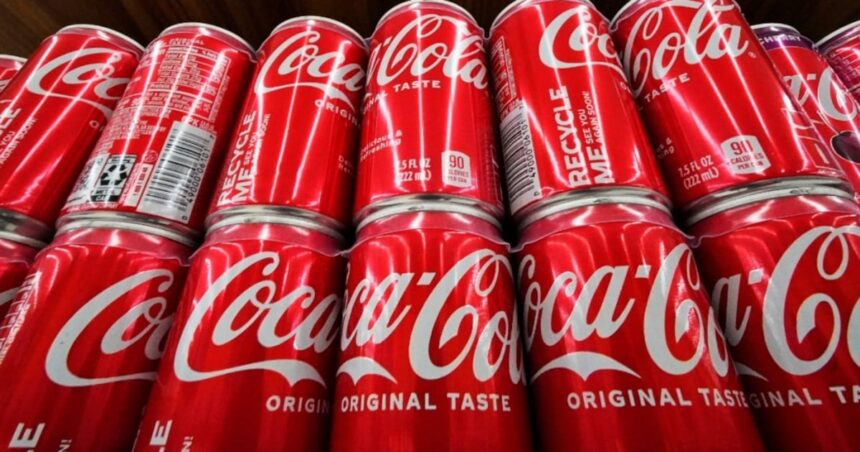Article – Last week’s sudden White House announcement of 25% tariffs on Canadian aluminum imports has sparked immediate concern across America’s massive packaging sector. The ripple effects are already moving beyond commodity markets and threatening to reach everyday products on supermarket shelves.
“This is a gut punch to our supply chain that consumers will feel within months,” says Meredith Wilson, operations director at PackTech Industries, which supplies packaging solutions to major beverage companies. “Aluminum cans, food containers, even the foil wrapped around your chocolate – all suddenly cost more to produce.”
The tariffs, scheduled to take effect August 1, represent the most aggressive trade action yet from the second Trump administration. While the White House frames the move as protecting American metal producers, packaging industry leaders warn the math doesn’t add up.
According to data from the Aluminum Association, domestic producers currently supply only about 30% of the specialized aluminum needed for food-grade packaging. The remainder comes primarily from Canadian smelters, which have historically enjoyed duty-free access under NAFTA and later USMCA provisions.
“We’re looking at $430 million in additional costs across the beverage sector alone,” notes Jeremy Ramsey, chief economist at the Can Manufacturers Institute. “Companies can absorb some short-term pain, but eventually, this transfers to consumers through shrinkflation or outright price increases.”
Walking through a production facility outside Milwaukee last Thursday, I watched as aluminum sheets were pressed, cut and formed into the familiar shapes that will eventually hold everything from soup to soda. Plant manager Carlos Diaz pointed to the massive coils of raw material stacked near loading docks.
“See those? That’s Canadian aluminum that just arrived yesterday. We paid one price for it. Next month, it’ll be 25% more expensive, but we still need it because American smelters don’t make enough of this specific alloy,” Diaz explained as machines stamped out thousands of can bodies per minute behind him.
The economic analysis from the Federal Reserve Bank of Chicago suggests packaging costs represent between 7-10% of retail prices for canned goods. With margins already tight due to post-pandemic inflation, manufacturers face difficult choices.
Environmental advocates raise another concern: potential material substitution. “Companies might shift to plastic packaging to avoid aluminum costs, reversing years of sustainability progress,” says Dr. Amara Johnson of the Environmental Policy Institute. “Aluminum is infinitely recyclable. Most plastics simply aren’t.”
The Treasury Department estimates the tariffs will generate approximately $1.8 billion in annual revenue, but industry groups counter that downstream economic impacts could erase those gains. The Packaging Manufacturers Coalition has already filed formal objections with the U.S. Trade Representative, citing the 114,000 American jobs directly tied to aluminum packaging production.
Canadian officials responded swiftly, with Trade Minister Mary Ng announcing proportional retaliatory measures targeting U.S. exports including agricultural products. “This unnecessary trade conflict benefits nobody,” Ng stated during an emergency press conference in Ottawa.
For smaller companies especially, the timing couldn’t be worse. “We operate on contracts with locked-in pricing,” explains Theresa Lau, founder of MicroBrew Packaging, which supplies aluminum cans to craft breweries across the Northeast. “I can’t go back to brewers mid-contract and demand more money, but my costs just jumped dramatically.”
The Consumer Packaged Goods Association projects the average household will spend an additional $192 annually on packaged goods if companies pass through the full tariff impact. Lower-income consumers would bear a disproportionate burden, as canned goods represent a larger percentage of food budgets in households earning under $50,000 annually.
Some larger corporations have already begun contingency planning. Coca-Cola executives disclosed during last quarter’s earnings call that they had increased aluminum inventory in anticipation of possible trade actions. Smaller manufacturers lack such financial flexibility.
At supermarket chain Regional Foods, purchasing director William Ortiz is bracing for tough conversations with suppliers. “We’re already scheduling meetings with our major vendors to understand their pricing strategies. Consumers are extraordinarily price-sensitive right now, and they’ll notice even small increases.”
The Aluminum Association’s president Tom Dobbins has requested an urgent meeting with Commerce Secretary Howard Fields, arguing for targeted exemptions for food-grade aluminum imports. “The domestic capacity simply doesn’t exist to meet current demand,” Dobbins emphasized in a public statement.
As packaging companies scramble to adjust, the tariffs highlight the complex interconnection between trade policy and everyday consumer experiences. What begins as a dispute over metal imports quickly transforms into higher prices for everything from cat food to craft beer.
“Politicians see tariffs as abstract economic tools,” Wilson from PackTech Industries reflects. “But walk down any supermarket aisle and you’ll find hundreds of products directly impacted by this decision. That’s nothing abstract about that.”






